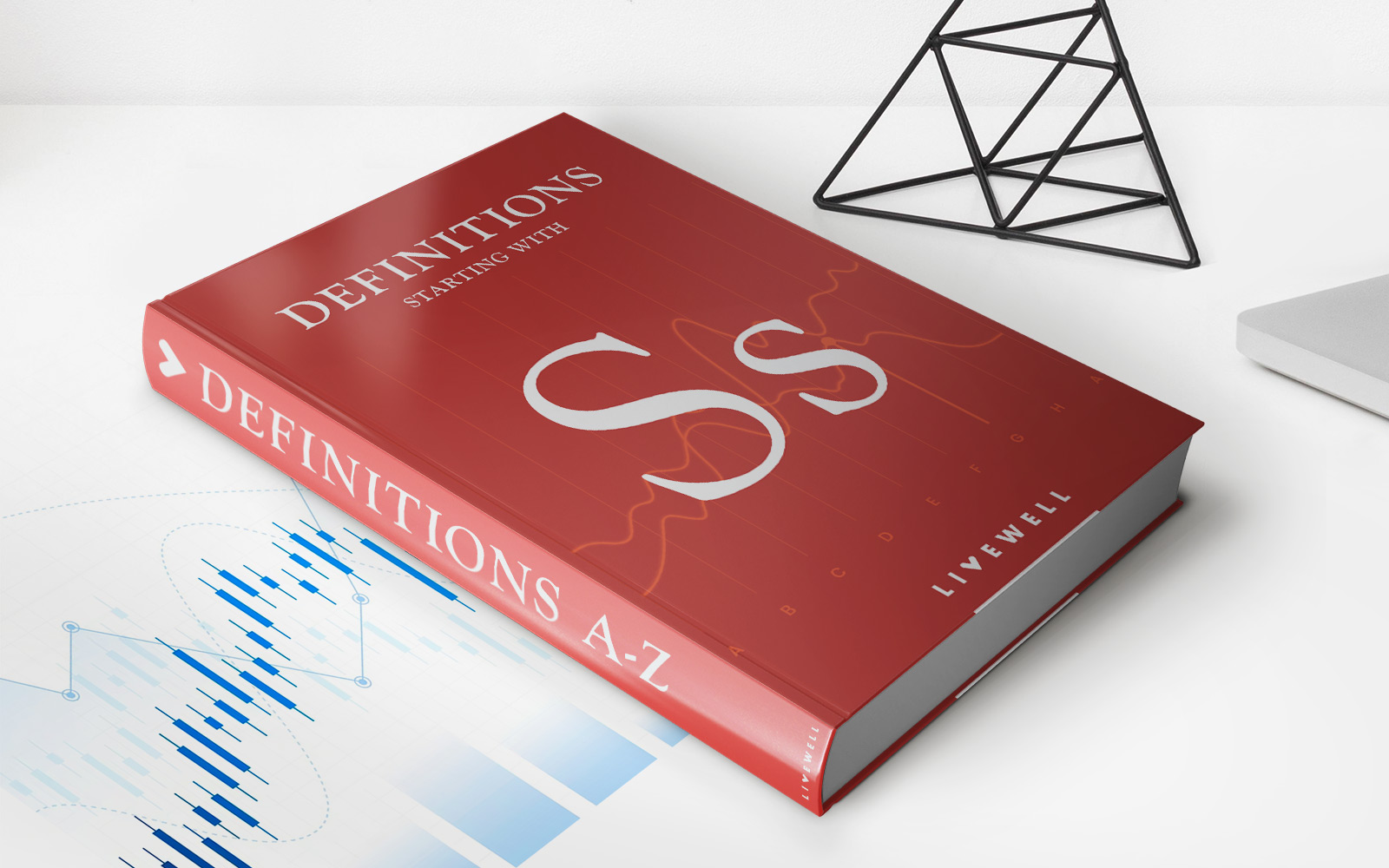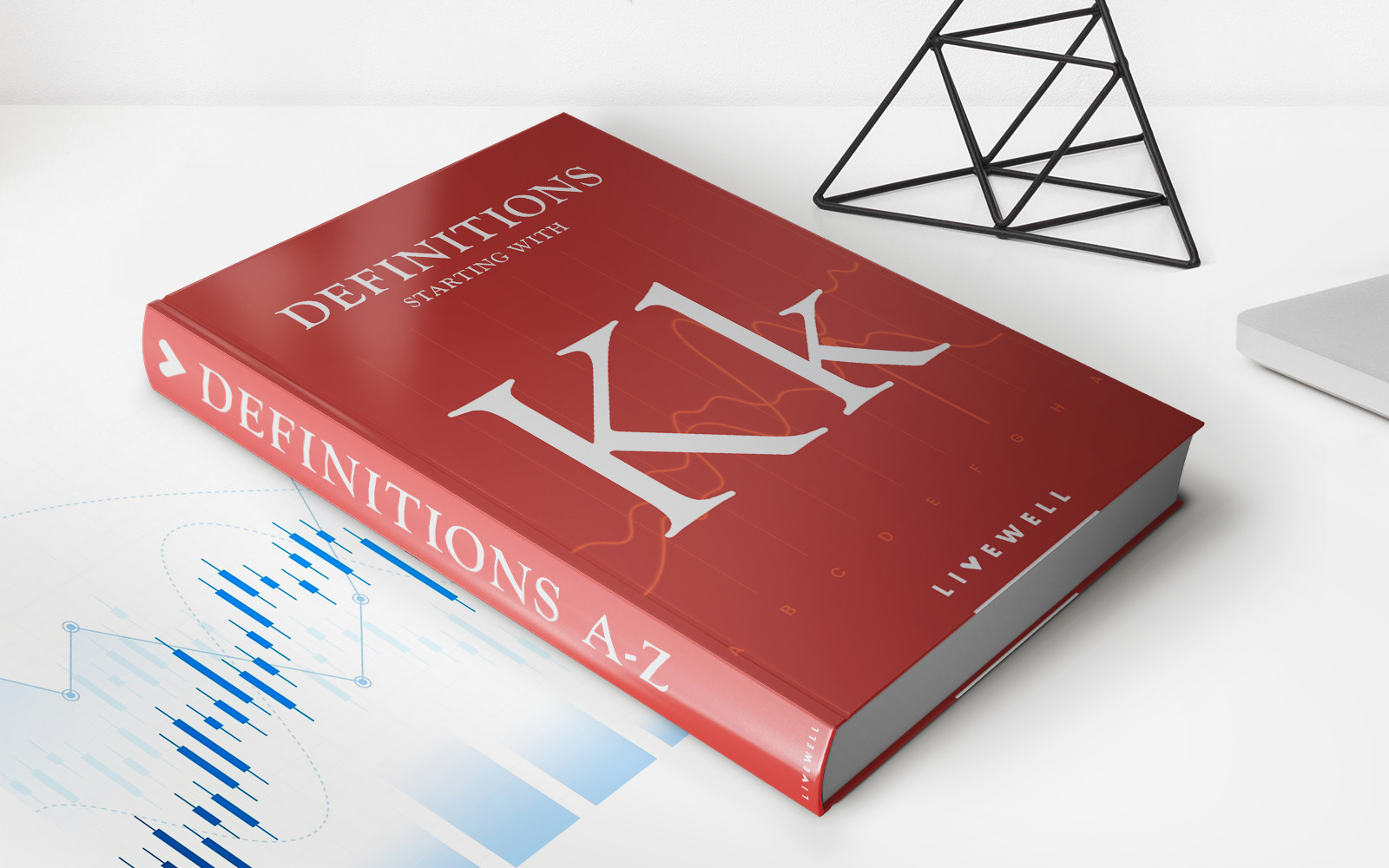

Finance
How Do I Know If I Have Federal Student Loans
Published: January 19, 2024
Learn how to determine if you have federal student loans. Discover the steps to manage your finance and navigate your loan repayment options.
(Many of the links in this article redirect to a specific reviewed product. Your purchase of these products through affiliate links helps to generate commission for LiveWell, at no extra cost. Learn more)
Table of Contents
- Introduction
- Understanding Federal Student Loans
- Types of Federal Student Loans
- How to Check If You Have Federal Student Loans
- Contact your loan servicer
- Access the National Student Loan Data System (NSLDS)
- Review your financial aid documents
- Check with your school’s financial aid office
- Review your credit report
- Conclusion
Introduction
When it comes to financing your education, student loans are often a necessary part of the equation. However, not all student loans are created equal. Understanding the type of student loans you have is crucial for managing your finances effectively. If you’re wondering how to determine whether you have federal student loans, you’re in the right place.
Federal student loans, as the name suggests, are loans provided by the U.S. Department of Education. These loans offer various benefits, such as lower interest rates, flexible repayment plans, and the potential for loan forgiveness programs. Unlike private student loans, federal loans are backed by the government, providing borrowers with certain protections and options.
In this article, we’ll outline the different types of federal student loans and offer guidance on how to check if you have them. Whether you’re a current student or a graduate looking to understand your loan portfolio, this information will help you gain clarity on your financial obligations.
Understanding the various types of federal student loans is essential for effectively managing your debt and making informed financial decisions. So, let’s dive into the details on federal student loans, how to determine if you have them, and what steps you can take to find out.
Understanding Federal Student Loans
Federal student loans are loans made by the U.S. Department of Education to help students and their families cover the cost of higher education. These loans typically have lower interest rates compared to private loans and come with benefits such as flexible repayment options and potential loan forgiveness programs.
There are several key characteristics that set federal student loans apart from other types of educational loans:
- Fixed interest rates: Federal student loans generally have fixed interest rates, meaning that the interest rate remains the same throughout the life of the loan. This allows borrowers to have a clear understanding of their repayment obligations.
- No credit check (for most loans): Most federal student loans do not require a credit check, making them accessible to a wide range of borrowers. This is particularly beneficial for students with limited or no credit history.
- Income-driven repayment plans: Federal student loans offer various income-driven repayment plans, which base monthly loan payments on the borrower’s income and family size. These plans can help alleviate financial strain by adjusting payments based on the borrower’s ability to pay.
- Deferment and forbearance options: Federal student loans provide options for deferment or forbearance, allowing borrowers to temporarily pause or reduce their loan payments under certain circumstances, such as unemployment or financial hardship.
- Potential loan forgiveness: Depending on your career path, you may be eligible for loan forgiveness programs offered by the federal government. These programs can forgive a portion or all of your remaining loan balance after meeting specific criteria.
It’s important to note that federal student loans have borrowing limits, which vary depending on factors such as your enrollment status, academic year, and dependency status. Understanding these limits can help you plan your educational expenses and manage your loan portfolio effectively.
Now that you have a solid understanding of what federal student loans are and their key features, let’s explore how you can determine if you have federal student loans.
Types of Federal Student Loans
When it comes to federal student loans, there are several types available to borrowers. Each type has its own eligibility requirements, loan limits, and repayment options. Familiarizing yourself with these loan types can help you better understand the specifics of your loan portfolio. The following are the main types of federal student loans:
- Direct Subsidized Loans: These loans are available to undergraduate students who demonstrate financial need. The interest on Direct Subsidized Loans is paid by the government while you are in school, during the six-month grace period after graduation, and during deferment periods.
- Direct Unsubsidized Loans: These loans are available to both undergraduate and graduate students and do not require the demonstration of financial need. Unlike Subsidized Loans, interest on Direct Unsubsidized Loans accumulates while you are in school and during other periods. You have the option to pay the interest while in school, or it will be capitalized and added to the principal balance upon repayment.
- Direct PLUS Loans: These loans are available to graduate or professional students, as well as parents of dependent undergraduate students. Direct PLUS Loans require a credit check and may have higher interest rates compared to other federal student loans. Repayment begins as soon as the loan is fully disbursed, but borrowers can request deferment while the student is in school.
- Perkins Loans: Perkins Loans are available to undergraduate, graduate, and professional students with exceptional financial need. These loans have a fixed interest rate and are administered by schools, using funds provided by the federal government. The availability of Perkins Loans is limited, and not all schools participate in the program.
Understanding the type(s) of federal student loans you have is crucial for knowing your repayment options and eligibility for certain benefits. It is recommended to review your loan documentation and contact your loan servicer to determine which specific loans you have borrowed. Additionally, accessing the National Student Loan Data System (NSLDS) can provide further information on your federal student loans.
Now that you have a better understanding of the types of federal student loans available, let’s explore how you can check if you have federal student loans.
How to Check If You Have Federal Student Loans
If you’re unsure whether you have federal student loans, there are several steps you can take to find out. By following these methods, you can gain clarity on your loan status and understand the specifics of your federal student loans:
- Contact your loan servicer: The first step is to reach out to your loan servicer, the company responsible for managing and collecting payments on your loan. You can usually find their contact information on your loan documents or online. They will be able to provide information about your loan, including whether it is a federal student loan.
- Access the National Student Loan Data System (NSLDS): The NSLDS is a centralized database that tracks federal student aid. You can access it at nslds.ed.gov. By creating an account and logging in with your Federal Student Aid (FSA) ID, you can view details about your federal student loans, including loan types, loan amounts, and outstanding balances.
- Review your financial aid documents: Gather any paperwork related to your student loans, such as promissory notes or financial aid award letters. These documents should clearly indicate whether your loans are federal or private. Pay attention to the loan servicer mentioned in the documents, as this will help in contacting them for more information.
- Check with your school’s financial aid office: Reach out to your school’s financial aid office, as they maintain records of the loans disbursed to you. They can help confirm whether you have federal student loans and provide additional information about your loans, such as disbursement dates and loan amounts.
- Review your credit report: Your credit report may provide insights into your student loan status. You can obtain a free copy of your credit report from each of the three major credit bureaus once per year at annualcreditreport.com. Look for any student loans listed, and note whether they are reported as federal or private loans.
By utilizing these methods, you can gather information about your federal student loans and gain a comprehensive understanding of your financial obligations. It is important to keep track of your loan details to ensure timely payments, explore repayment options, and make informed decisions about your finances.
In the next section, we will conclude our discussion and summarize the key points regarding determining whether you have federal student loans.
Contact your loan servicer
One of the first steps you can take to determine if you have federal student loans is to contact your loan servicer. Your loan servicer is the company responsible for managing your loan account and collecting your loan payments. They have access to detailed information about your loan, including whether it is a federal student loan.
To find out who your loan servicer is, you can refer to your loan documents or check the National Student Loan Data System (NSLDS) website. Once you have the contact information for your loan servicer, give them a call or reach out to them through their website or email.
When you contact your loan servicer, be prepared to provide your personal information, such as your full name, Social Security number, date of birth, and possibly your loan account number. This will help them locate your loan information quickly and accurately.
During your conversation with the loan servicer, you can ask specific questions about your loans, such as the type of loan, the interest rate, and the repayment options available. They can also provide you with information on any loan forgiveness or deferment options you may be eligible for.
It is essential to maintain open communication with your loan servicer throughout the life of your loan. They can guide you through the repayment process, assist you with any questions or concerns, and provide guidance on managing your federal student loans effectively.
Remember, federal student loans come with certain benefits and protections that you may not have with private student loans. So, contacting your loan servicer is an essential step in understanding your loan status and making informed decisions about your educational debt.
In the next section, we will discuss another method you can use to determine if you have federal student loans: accessing the National Student Loan Data System (NSLDS).
Access the National Student Loan Data System (NSLDS)
The National Student Loan Data System (NSLDS) is a helpful online resource provided by the U.S. Department of Education. It is a centralized database that houses information about federal student aid, including federal student loans. Accessing the NSLDS can provide you with detailed information about your federal student loans, such as loan types, loan amounts, and outstanding balances.
To access the NSLDS, you will need to create an account and log in using your Federal Student Aid (FSA) ID. If you don’t have an FSA ID, you can create one on the Federal Student Aid website.
Once you’ve logged in to the NSLDS, you will be able to view your loan information on the dashboard. This includes details about each individual loan you have borrowed, such as the loan servicer, loan status, and repayment plan options.
The NSLDS also provides information about any federal grants you may have received, such as the Pell Grant or Federal Work-Study program. These grants do not need to be repaid, so it’s helpful to understand which forms of financial aid you have received.
By accessing the NSLDS, you can get a comprehensive overview of your federal student loan portfolio, helping you better understand your loan obligations and repayment options.
While the NSLDS is an excellent resource, it’s important to note that it only contains information about federal student loans. If you have private student loans, they will not be listed in the NSLDS. In that case, you’ll need to explore other methods to determine if you have any private student loans.
In the next section, we will discuss another method to check if you have federal student loans: reviewing your financial aid documentation.
Review your financial aid documents
An essential step in determining whether you have federal student loans is to review your financial aid documents. These documents include promissory notes, financial aid award letters, and any correspondence related to your student loans.
When you initially applied for financial aid, you would have received a financial aid award letter outlining the types and amounts of aid you were awarded, including any federal student loans. This letter typically provides detailed information about your loan, including the loan type (subsidized or unsubsidized), loan amount, and loan terms.
Additionally, you may have signed a promissory note when you accepted your federal student loan. The promissory note is a legally binding document that outlines the terms and conditions of your loan, including repayment terms, interest rates, and any applicable fees.
By reviewing these financial aid documents, you can confirm whether you have federal student loans and gather important information about your loan terms and obligations.
If you cannot locate your financial aid documents or are unsure about the loan types you have borrowed, you can contact your school’s financial aid office. They maintain records of the loans disbursed to you and can provide you with copies of your financial aid documentation. They can also answer any questions you may have regarding your loans and help you understand your loan obligations.
It’s crucial to keep your financial aid documents in a safe and easily accessible place. These documents are essential for understanding your loan portfolio and managing your federal student loans effectively.
In the next section, we will explore another method to check if you have federal student loans: contacting your school’s financial aid office.
Check with your school’s financial aid office
If you’re unsure whether you have federal student loans, another valuable resource to turn to is your school’s financial aid office. The financial aid office is responsible for administering and managing the various forms of financial aid, including federal student loans, at your educational institution.
Reach out to your school’s financial aid office and schedule an appointment or contact them via phone or email. When communicating with them, provide your full name and student identification number to help them locate your records quickly. It’s also helpful to have any relevant documentation, such as financial aid award letters or loan promissory notes, on hand during the conversation.
The financial aid office can provide you with detailed information about your loan status, loan types, and any other pertinent information related to your federal student loans. They can confirm whether you have federal student loans and provide specific details about your loan terms, interest rates, and repayment options.
Additionally, the financial aid office can assist you with understanding the loan repayment process, exploring potential loan forgiveness programs, and addressing any concerns or questions you may have about your federal student loans. They are knowledgeable in navigating the complexities of financial aid and can offer guidance tailored to your unique circumstances.
Remember, the financial aid office is there to support you throughout your academic journey, including managing your financial aid. Utilize their expertise and resources to gain a clear understanding of your loan status and make informed decisions regarding your federal student loans.
In the next section, we will discuss another method to check if you have federal student loans: reviewing your credit report.
Review your credit report
Reviewing your credit report can provide valuable information about your financial history, including any student loans you may have. Your credit report is a record of your borrowing and payment history, maintained by the three major credit bureaus: Equifax, Experian, and TransUnion.
You can request a free copy of your credit report once a year from each of the credit bureaus by visiting annualcreditreport.com. Reviewing your credit report allows you to determine if you have any student loans reported and provides additional details about them.
When reviewing your credit report, look for any loans labeled as “student loans” or “education loans.” These entries should indicate whether the loans are federal or private. Federal student loans are typically reported as such, while private student loans may be listed under the name of the lending institution.
Keep in mind that not all student loans will appear on your credit report immediately. It may take some time for newly acquired loans to be reported. However, if you have been making payments on your student loans, they should be reflected in your credit report.
In addition to checking for federal student loans, reviewing your credit report can also help you identify any other forms of credit you may have, such as credit cards or other loans. This comprehensive view allows you to assess your overall financial situation.
If you discover any discrepancies or errors on your credit report, such as loans that you did not borrow or incorrect loan information, contact the credit bureau and the lender to dispute the inaccurate information. Ensuring the accuracy of your credit report is crucial for maintaining a healthy credit profile.
By reviewing your credit report, you can gain clarity on any student loans you may have and confirm whether they are federal or private. This information will help you better understand your loan obligations and plan your repayment strategy.
Now that we have explored various methods to check if you have federal student loans, let’s summarize the key points covered.
Conclusion
Determining whether you have federal student loans is crucial for managing your finances and making informed decisions about your educational debt. By following the methods outlined in this article, you can gain clarity on your loan status and understand the specifics of your federal student loans.
First, contact your loan servicer to obtain information about your loans and clarify whether they are federal student loans. They can provide you with details about your loan types, repayment options, and other relevant information.
Accessing the National Student Loan Data System (NSLDS) is another valuable method. By creating an account and logging in, you can view your federal student loan information, including loan types, amounts, and outstanding balances.
Reviewing your financial aid documents, such as promissory notes and financial aid award letters, can also provide insight into your federal student loans. Contacting your school’s financial aid office further ensures that you have the most accurate and up-to-date information about your loans.
Lastly, reviewing your credit report can help identify any reported student loans, including federal loans. This comprehensive view of your borrowing history allows you to assess your overall financial situation.
By utilizing these methods, you can gain a comprehensive understanding of your federal student loans, including the loan types, repayment options, and obligations. This knowledge empowers you to make informed decisions about managing your student loan debt and planning for your financial future.
Remember, federal student loans offer certain benefits and protections, such as income-driven repayment plans and potential loan forgiveness programs. It is crucial to stay informed and proactive in managing your federal student loans to ensure successful repayment and financial well-being.
If you have any specific questions or concerns about your federal student loans, reach out to your loan servicer or your school’s financial aid office. They are there to assist you and provide guidance throughout your loan repayment journey.
Take control of your financial future by understanding your federal student loans and proactively managing your educational debt. With the right knowledge and resources, you can navigate the world of student loans confidently and pave the way towards a brighter financial future.














